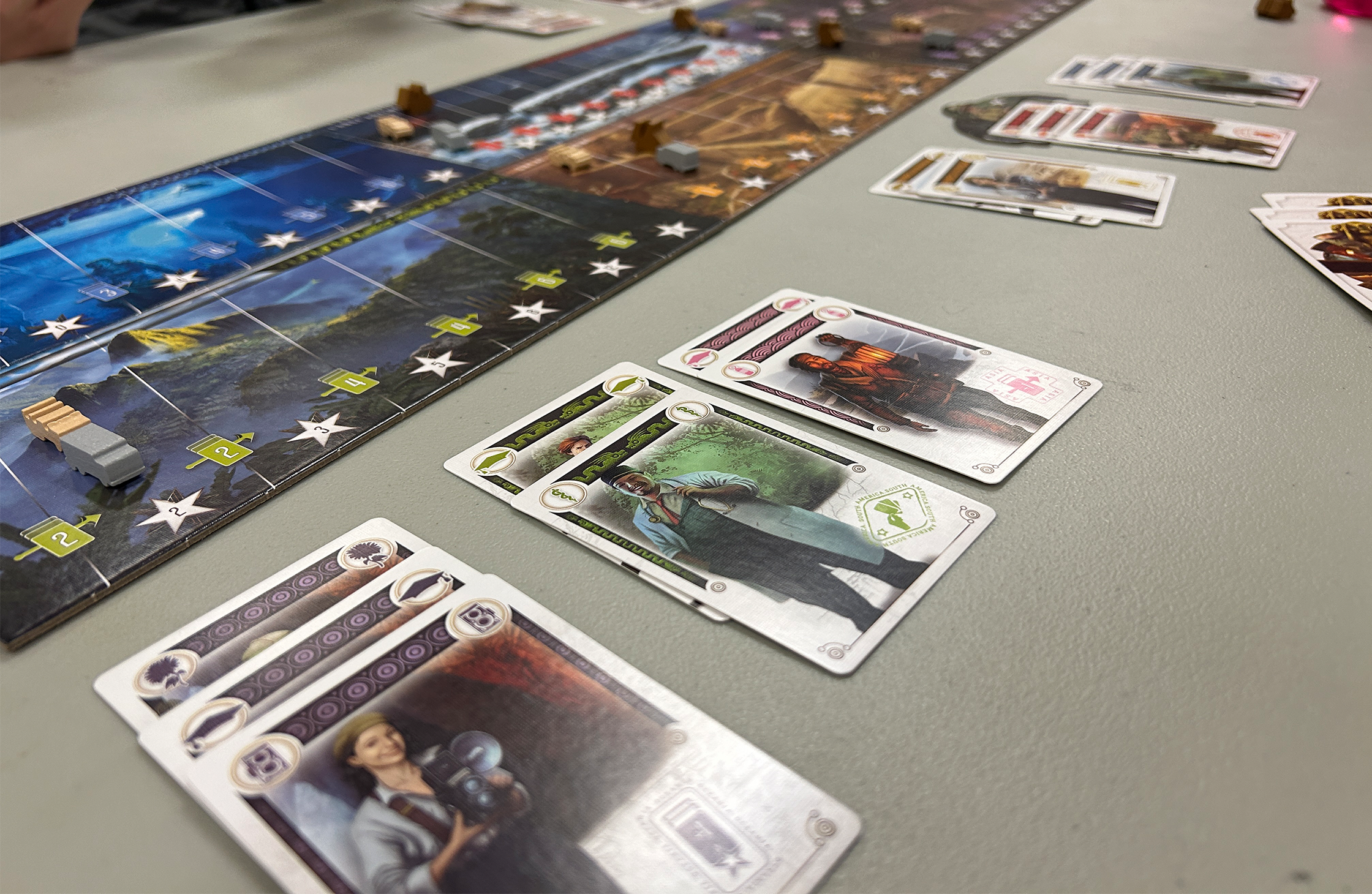7 Wonders holds a special place in my collection. It’s a game that’s just complicated enough to get new players interested, while being compelling enough to keep the attention of more experienced hobby gamers. Downtime is pretty much nonexistent compared to most other games, even at the maximum player count. The only problem with it, really, is that I’ve played it so many times it’s hard for me to want to bring it out to the table. So, when I was introduced to Archeos Society, I knew I had something that could very easily fit the same kind of space in my library, while being fresh enough for me to welcome it to the table. At its core, Archeos Society is a set collection game loosely themed as a series of archeological digs around the world. It’s quick to play at all player counts, and has a bunch of variety in the box. If this sounds interesting to you, keep on reading!
To set up, check out the rule book for the scenario you want to play, and grab the Character Cards required to play them. You’ll only need 6 out of the 12 Characters, so every scenario has entirely different ways to play. Shuffle these cards together, then cut the deck in half and shuffle three Monkey Cards into the bottom half. Stick the remaining cards on top to make the Market Deck. Some Characters have additional components that you’ll need to integrate, but they’re all simple enough to just glance at the rulebook and figure out.
Take out the Archaeological Sites and place them within reach of all players. The scenario will tell you which side of the Sites need to be face up. Give each player a set of player tokens; stick one token on each Site, and one on the scoring track. Deal each player a card, and place additional cards (there will be a different number based on player count) face-up between all players to create a market. Decide on a start player, and start exploring!
On your turn, you can do one of two things: draw a card from the Market (either a face-up card or the top card of the deck), or play a set. If there are no face-up cards in the Market, a drawing player instead draws two cards from the Market Deck. If a Monkey is drawn, announce it to everyone, place it aside, and draw another card. Once all three Monkeys are drawn, the round immediately ends.
To play a set, the active player can lay down any number of cards that are either all the same character or all the same color. When a set is laid down, all other cards in the active player’s hand are placed face-up in the Market, and are now available for other players to collect on their turn. Each set has an expedition leader, as chosen by the active player, that manages two things: the Site where the active player’s token may advance, and the Character ability that triggers. On the Sites, each step along the track notes the size of a set that is required to advance a player’s token. If the set played has a card count equal to or greater than that threshold, then they may advance their token. Character abilities vary greatly. Some will let you advance on sideboards (a few Characters have them), others will let you hold onto cards instead of placing them in the Market, others will reduce the number of cards needed to advance on a Site track. Each Character power is unique and useful!
When the third Monkey is drawn, the scoring phase begins. Players score points based on their placement along all of the Site boards, the number and size of their played sets, and any Character abilities that add victory points. Then set it up again for another Season of exploration. Collect all cards and rebuild the Market Deck as described in the initial set up. For a 2–3 player game, the game ends after two Seasons. For higher player counts, you’ll play a third Season. After all Seasons have been played, whoever has the highest score wins.
The illustrations for Archeos Society are top notch. The graphic design is clear and simple to understand. The only issue I have is being unable to clearly read some of the card thresholds on the Sites in dim light, but that is fairly easy to work around. Cards, tokens, and Sites are all good quality chipboard. The wooden tokens for the game are cut well, but having the color scheme be broader than the gray/brown/black/white scheme chosen would have made them easier to read at a glance on the Site boards.
The one component that’s absolutely fantastic is the insert the game comes with. It’s perfectly slotted to hold all character cards separately, sleeved or not, in a way that allows for either vertical or horizontal storage. All other components can be placed in a small box that fits underneath the Site boards and rules, holding everything nice and snugly.
Archeos Society is a wonderful game for folks just getting into the hobby and looking to step up from family classics. It adds a bunch of complexity and variety as you grow more experienced with it, and it plays well at all counts. It’s a standard in my TAG bag for game nights, so if the game sounds interesting, come on out to one of our events and I’ll be happy to teach it in person :)
Designed by: Paolo Mori
Player Count: 2–6
Playtime: 60 minutes
Time to Learn: 5 minutes
Complexity: 2.0
Replayability: 4/5
MSRP: $40
Written by Brendan Quinn, President of Tri-City Area Gaming. We’re out in the world again! Come play games with us at any of our regular monthly events.
All the links for Tri-City Area Gaming: tcag.carrd.co


